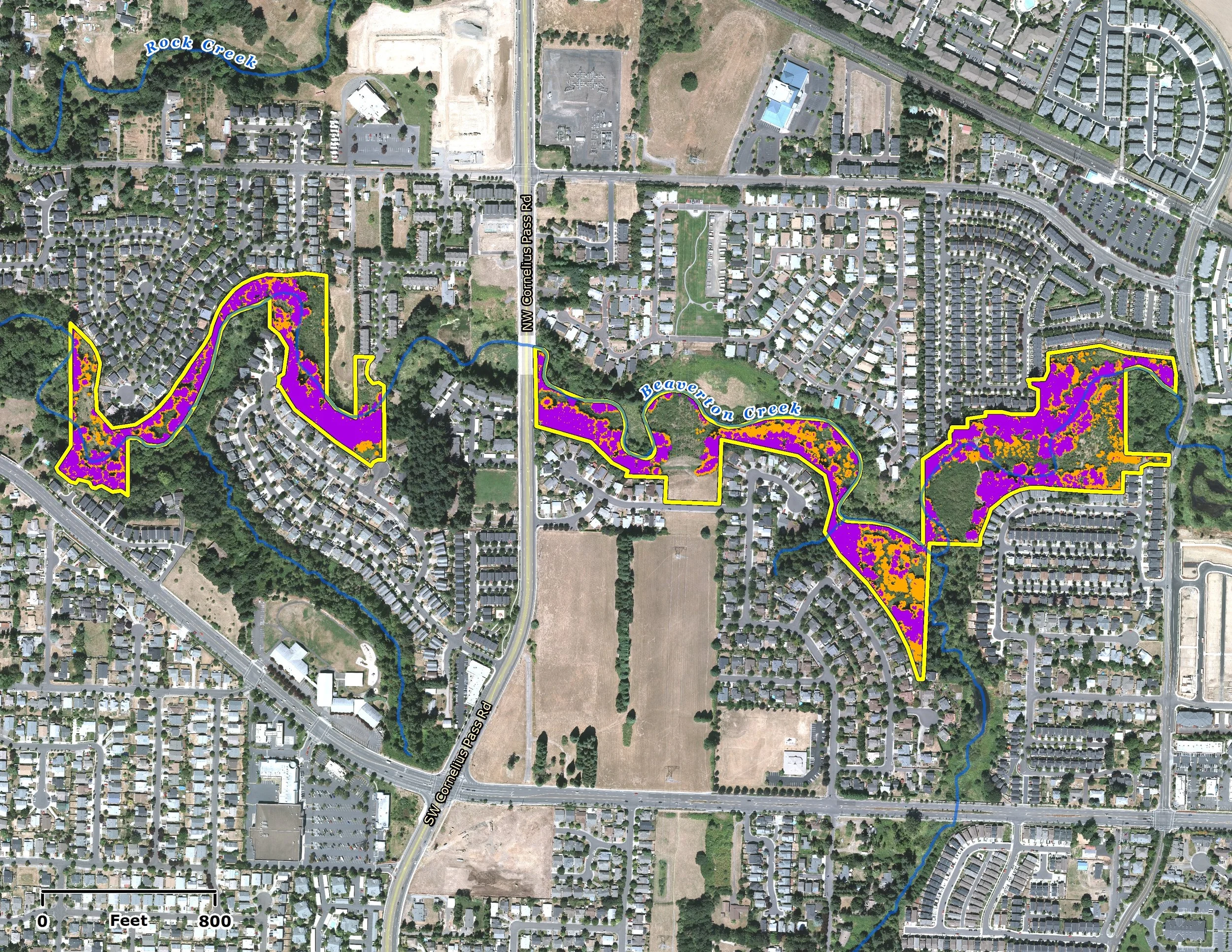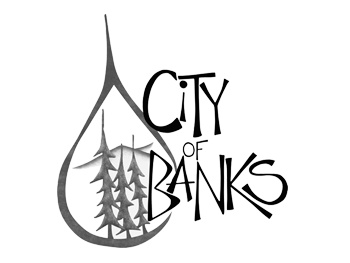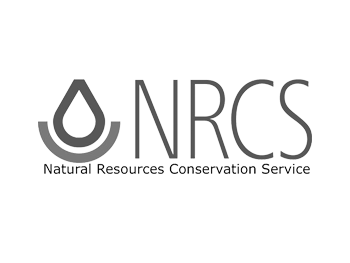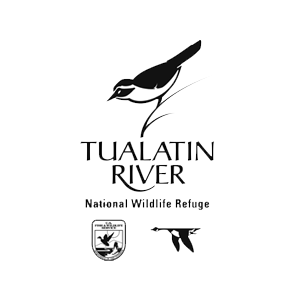Between 2005 and 2025, Tree for All Partners restored more than 150 riparian miles and planted more than 17 million native trees and shrubs. More than 40 case studies were published to document the efforts that made it possible.
Creating Stepping Stones Along Urban Streams
Beaverton Creek and its seven major tributaries drain a densely populated urban area of nearly 25,000 acres. From its headwaters, Beaverton Creek flows through mostly urbanized portions of Washington County, through downtown Beaverton and on to Hillsboro, where it joins Rock Creek. Upstream of this confluence, in Hillsboro’s Quatama area—named for a local rail depot that was in turn named for a Southern Oregon tribe—Tree for All partners have undertaken three interlinked projects that cover approximately 2.5 stream miles. The Quatama projects represent a long-term community effort to restore and connect three separate urban parcels as stepping stones into one healthy and holistic natural area.
The Site
First planting: 2007
Size: 49 acres
Stream length: 11,446 feet
Total to date: 123,958 plants
Plant communities: Forested Wetland, Riparian Forest, Scrub Shrub, Upland Forest
The Challenge
Urbanization in the Beaverton Creek watershed has resulted in degraded fish and wildlife habitat, poor water quality, elevated temperatures and dramatic seasonal stream flows. Impervious surfaces surround the creek, creating detrimental urban runoff that alters natural processes within the stream. The explosion of both residential and commercial development, combined with more roads and traffic, has contributed to increased pollution in Beaverton Creek. Invasive reed canary grass and Himalayan blackberry were choking the riparian areas and making it difficult for native dogwoods, snowberry and willows to thrive. Conditions among native and invasive vegetation on the upland slopes were no better. Despite remnant stands of California black oak, big-leaf maple and mature red alder trees, the percentage of native versus invasive species remained insufficient to meet water quality and wildlife conservation goals. Despite the challenges that come with being one of the most urbanized waterways in Washington County, there are still many portions of Beaverton Creek with high ecological value, even including some that support essential salmonid habitat.
The Transformation
About 10 years ago, the community began partnering with Friends of Trees, the City of Hillsboro and Clean Water Services to improve Beaverton Creek and its surrounding natural areas. So much has changed as a result of this commitment. Volunteers, neighborhood groups and others have devoted countless weekend days to removing invasives and planting native trees, shrubs and appropriate groundcover. Today, the Quatama community can boast that more than two miles of stream and adjacent riparian and upland forest habitats have been restored. These places now provide a vital refuge for people and nature in the midst of a bustling urban neighborhood.
Everyone who worked on the project can take pride in knowing that their contribution supports a greater diversity of birds and wildlife. Looking ahead, neighbors may soon have the opportunity to participate in educational activities, including bird monitoring led by staff biologists from community partner organizations.
Clean Water Services will continue to collaboratively manage the Quatama site as it matures. Quatama’s transformation means better connectivity for wildlife and a greater impact on the health of Beaverton Creek and the downstream Rock Creek watershed as a whole.
This Quatama profile covers a series of interconnected projects.
View project-by-project statistics.
Click to explore the change in mature native plant coverage between 2007 (purple) and 2014 (orange).







































